If you have settled on the ideal cage for your pet bird, now is the time to figure out how to furnish and equip it so that your feathered friend can really thrive in their new home.
One of the key items you will need to install in your pet birds cage will be perches. Let us help you get it right with our quick guide to the number and types of perches your new cage will need.
Perches are essential to your bird’s wellbeing
You cannot afford to overlook the necessity of perches in your birdcage as they can have a drastic impact on the health of your bird and even cause severe injury and lameness. Perches are important for these key reasons:
- Like tree branches, perches provide a raised surface for the bird to climb, stand and perch. Captive birds spend most of their time on perches.
- Perches provide a means of access to food and water. This allows your bird to feed comfortably.
- Your pet bird will interact with fellow birds and toys while sitting on a perch. Two birds sitting side by side is a sign of a relaxed affectionate relationship.
- A perch is where your bird will rest. This could be up to 12 hours per day.
- Multiple perches provide exercise. Your bird can hop or fly between them.
How many perches should be in a birdcage?
There is no set number of perches that you can put in your birdcage. As we explain below, a precise number depends on the birds sizing to their cage.
However, pet experts suggest that a bird should have a minimum of 3 different types of perches to support the foot health of your bird. Having more than one perch means that your bird can hop or fly between them providing much-needed exercise. Two perches can be used to provide access to food and water, with the second perch for rest.
Working out how many perches your bird will need
Settling on the right number of perches for your pet bird cage requires placing your bird at the heart of decision-making.
The sizing of the cage in relation to your bird is a key determinant of the number of perches that will be practical for your setup.
Understanding your birds size to cage size ratio will help in deciding the number of perches that are realistic for your pet. Birds vary massively in size and will need different arrangements to make their setup enriching.
Generally smaller and more active birds like finches or budgies will have room for more perches than larger, taller birds like macaws unless their cage is very large.
Check out this great bird cage from Prevue. It’s the one we use!
The type of perches you install matters too.
You may think that the straight plastic perches that come with the cage are suitable for your pet bird, but these cheap perches can do a lot of harm.
Hard, straight unnatural perches can strain or even erode a bird’s feet leading to painful arthritis or a horrific condition called bumblefoot where, like a pressure sore, the skin and flesh of the bird’s foot wears away.
One of the ways you can protect your bird from these problems is by varying the types of perch provided to your bird. Here are some key types of perch that will be beneficial for your bird’s foot health:
- Rope perches have a great texture underfoot and can be climbed, and placed in interesting and engaging arrangements. If you opt for rope you need to keep an eye on its condition as it can fray, causing impaction if ingested or wrapping and trapping the toes.
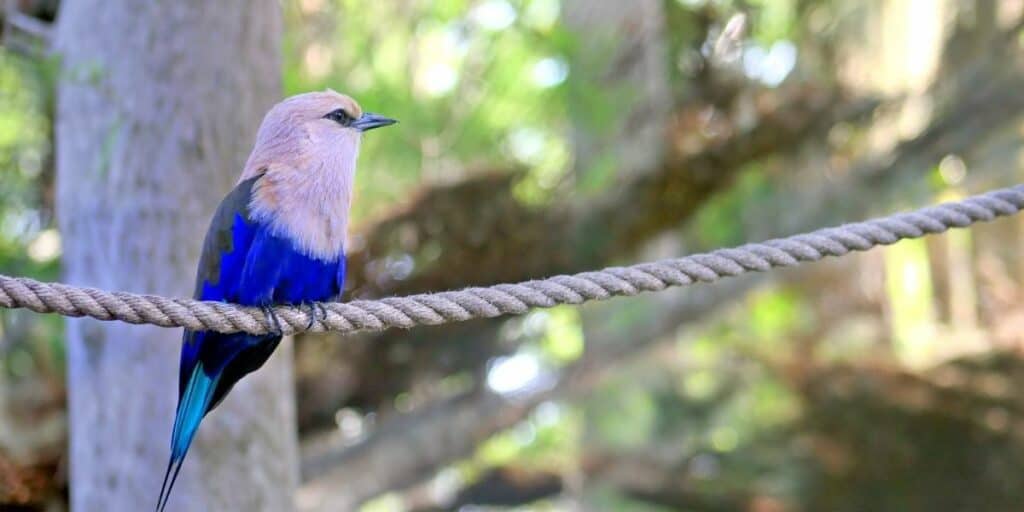
- Basic dowel perches though straight and uniform can be chewed, but should not be the only type of perch available to your bird as they aren’t so comfortable after a prolonged period.
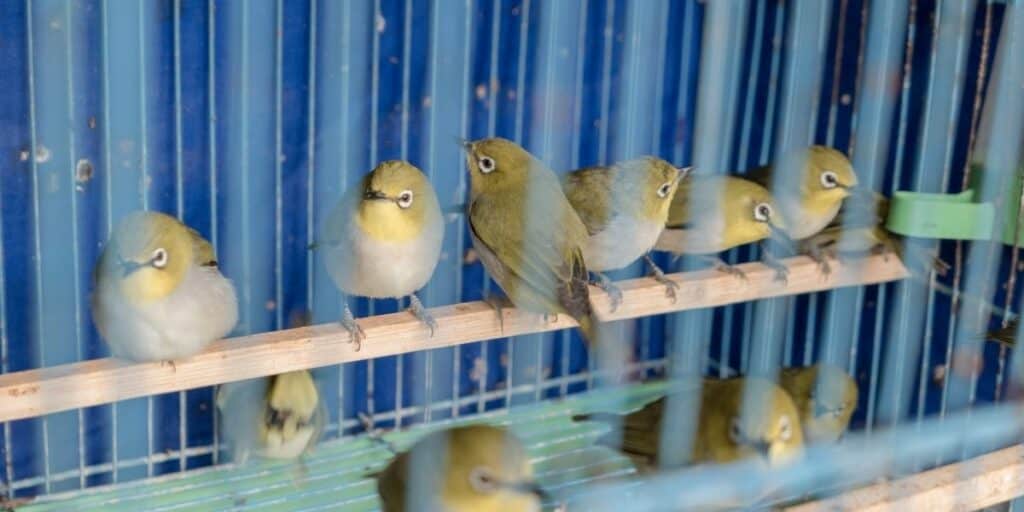
- Natural perches
These are the best options for most birds and admirably replicates the continues and branching they would encounter in a tree.
Multi-branch perches provide good exercise for the bird and are comfortable underfoot. If the bark is present on the perch, your bird will enjoy chewing and peeling it off.
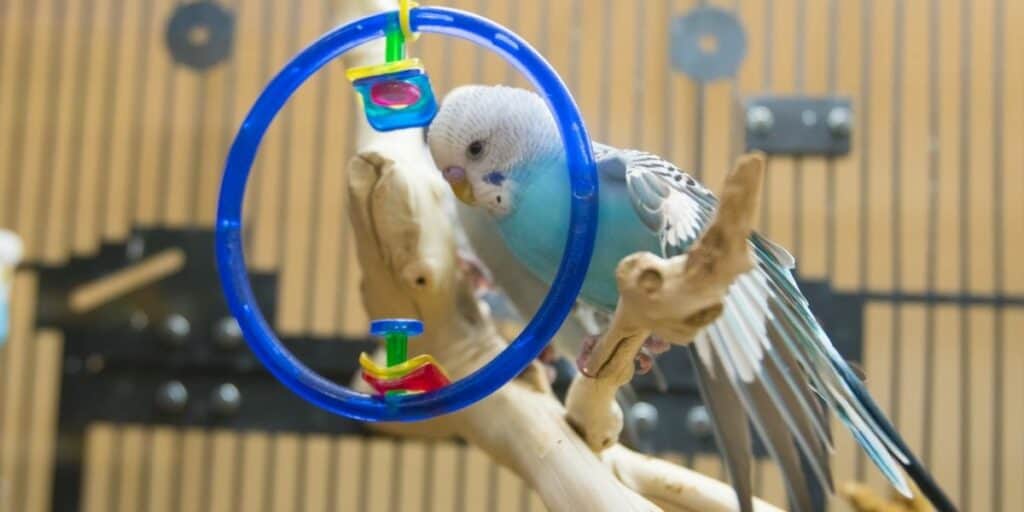
- Sand perches
A sand perch enables you to keep the growth of your bird’s claws under control. They are not for long-term installation as they can irritate the bird’s feet. They should never be the highest or main perch in a cage.
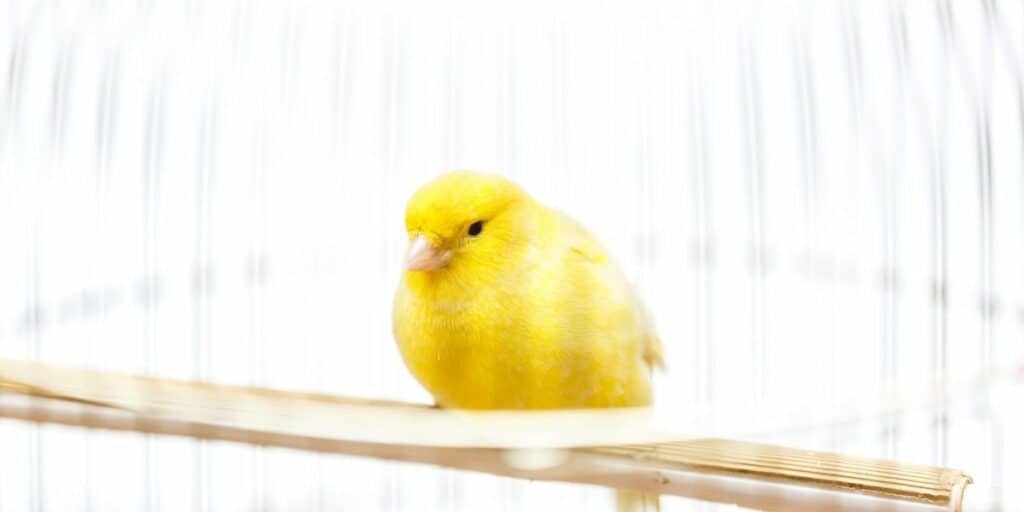
- Plastic clip on perches
These are often found in smaller, cheaper bird cages and simply attach to metal bars. Not drilling or attachments needed. These are washable but not comfy for larger birds.
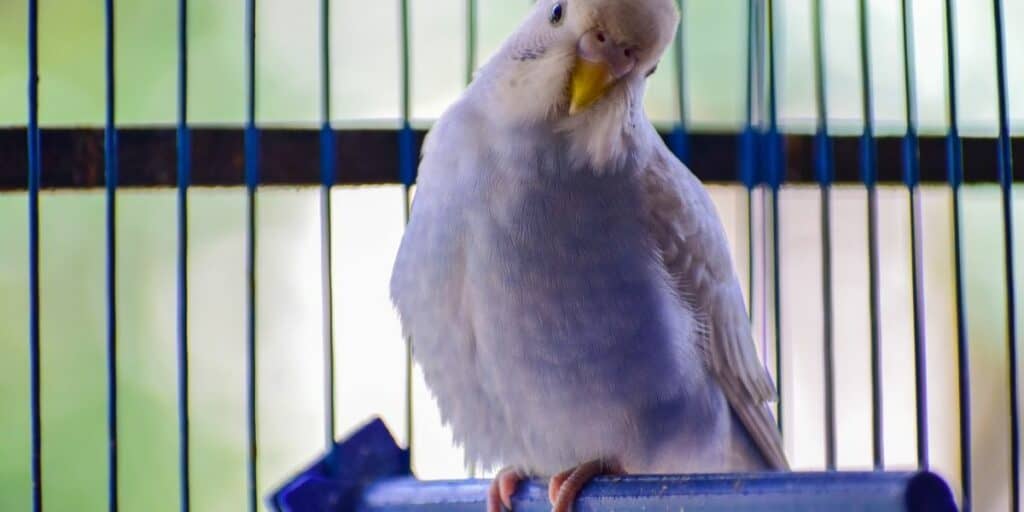
- Perch diameter is critical
The diameter of the perch needs to be sized to the bird that will be using it. If a perch is too narrow, years of prolonged use can cause painful arthritis in the claws, making it difficult for the bird to uncurl them.
Perch diameters vary from a diameter of 9.5 to 15 millimeters for small birds like finches and parakeets to up to 60 millimeters for large macaws like the hyacinth blue.
Varying the diameter of the perches as well as the type of the perch is the best solution for your bird. Tree branches do this naturally making them ideal for most cages.
Check out our favorite bird cage here!
Rounding up.
As you can see, there is more to providing the right perches for your pet than just the number. Rather than focusing on how many perches should be in a birdcage, carefully evaluate the perches, you are going to use for their benefits to your bird.




